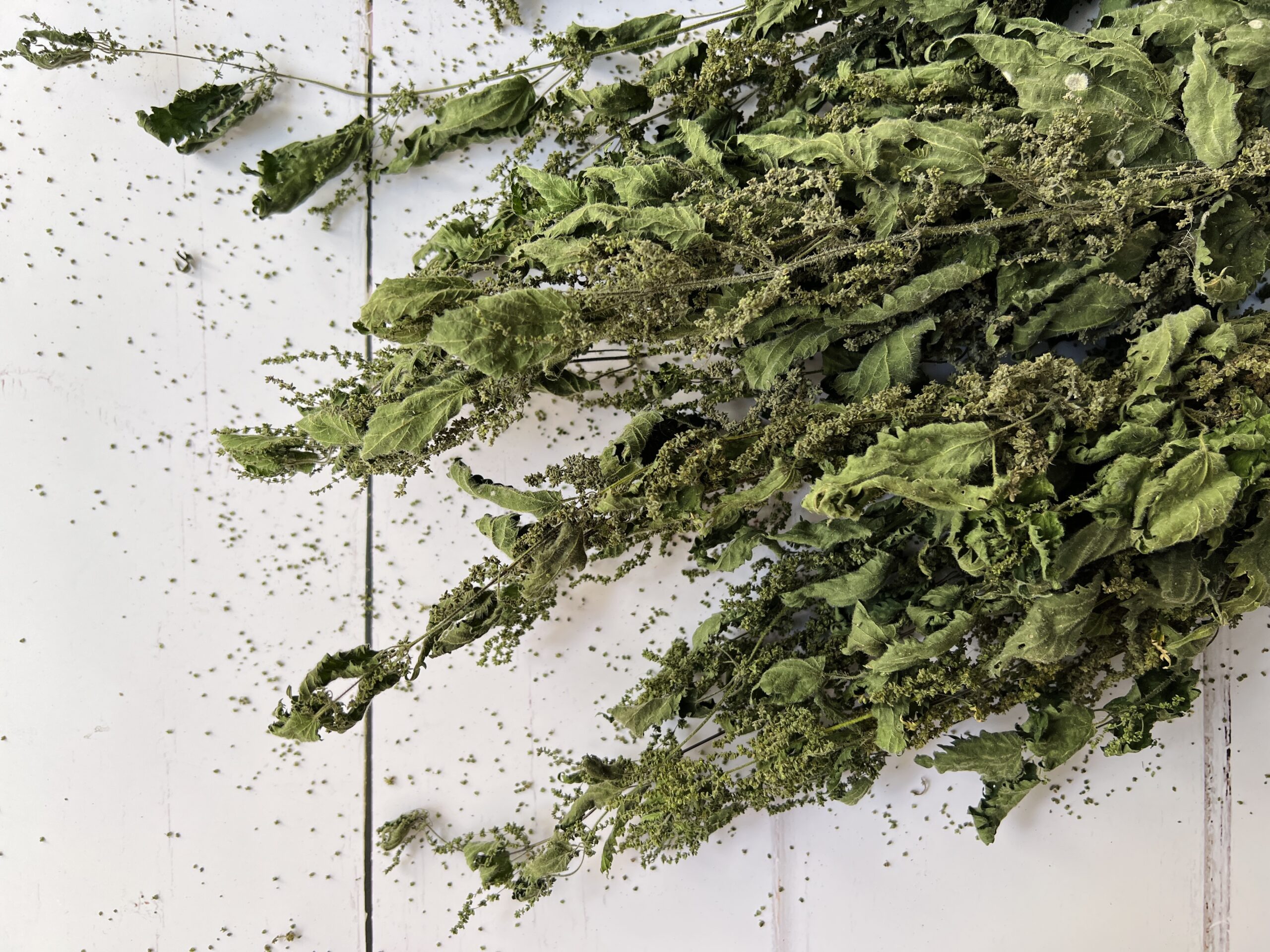
Foraging for Nettle Seeds
One of my more recent foraging discoveries is nettle seeds. We’ve foraged for nettle leaves in Spring – they make excellent tea, soup or pesto – but the time for picking nettle leaves is long gone, the nettle plants having all gone to seed. You really shouldn’t use the leaves after the plants have seeded, It was during our summer visit to Germany, meeting up with an old school friend for a walk in the woods, when he introduced me to gathering nettle seeds as a food source. Apparently the seeds are so nutrient dense that they make an amazing health and energy boost, and they’re full of various vitamins, minerals and fatty acids (I’m no health expert though).
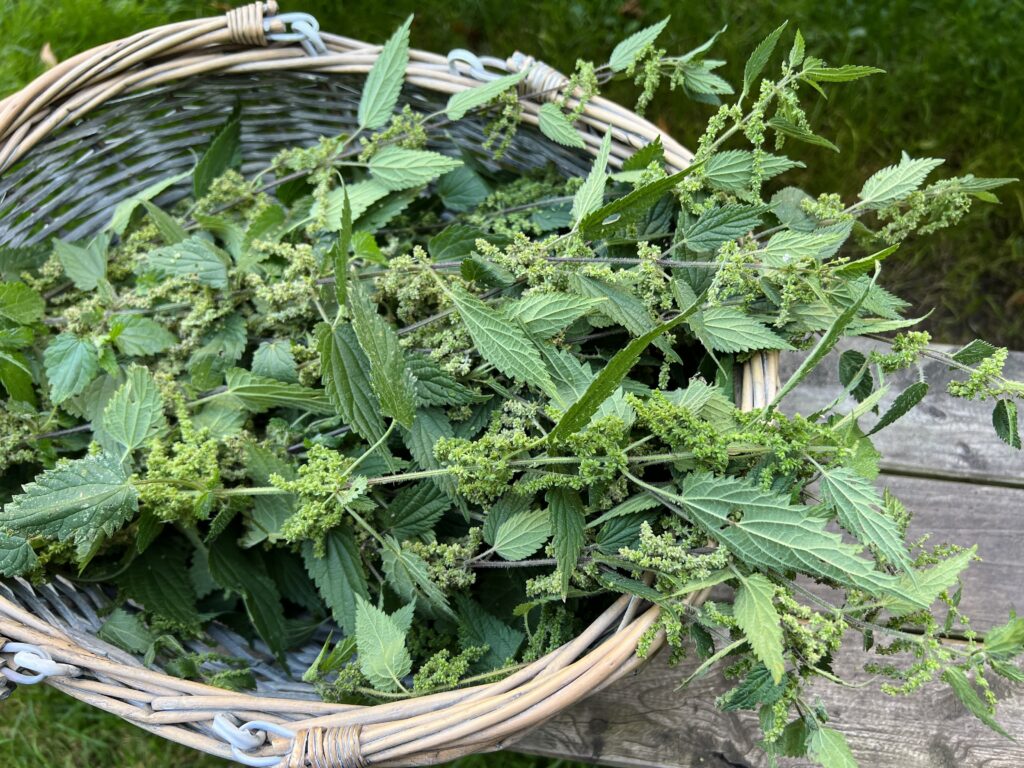
First of all, you need to know that nettles have two separate flowering plants – male and female. Only the female plants produce seeds. The male plants produce small clusters of flowers (which produce pollen to fertilise the female plants which in turn produce the seeds). At first glance they can look quite similar, but when you see them side by side you can tell them apart – the clusters on the male plant are quite spares and spindly and stick out more, whereas the clusters on the female plant are very full and much heaver, thus drooping down more.
To gather you nettle seeds you will need:
- Gloves
- Scissors
- A bag
The gloves, or course, are to protect yourself from getting stung. Snip off the top part of ten inches or so of the female nettle plants, and collect them in your bag until you have a good amount (I counted afterwards that I had about 30-40 nettles stems per jar of seeds).
When is the best time to gather nettle seeds? Nettle seeds will be ready to harvest from late Summer to mid-Autumn. They are best gathered when they’re plump, green and looking healthy. Avoid any seeds that have gone brown already. It will depend a little on where you live too. Here in Edinburgh, I find September is the best time to forage for nettle seeds, though you can still find good clusters of green seeds in to October.
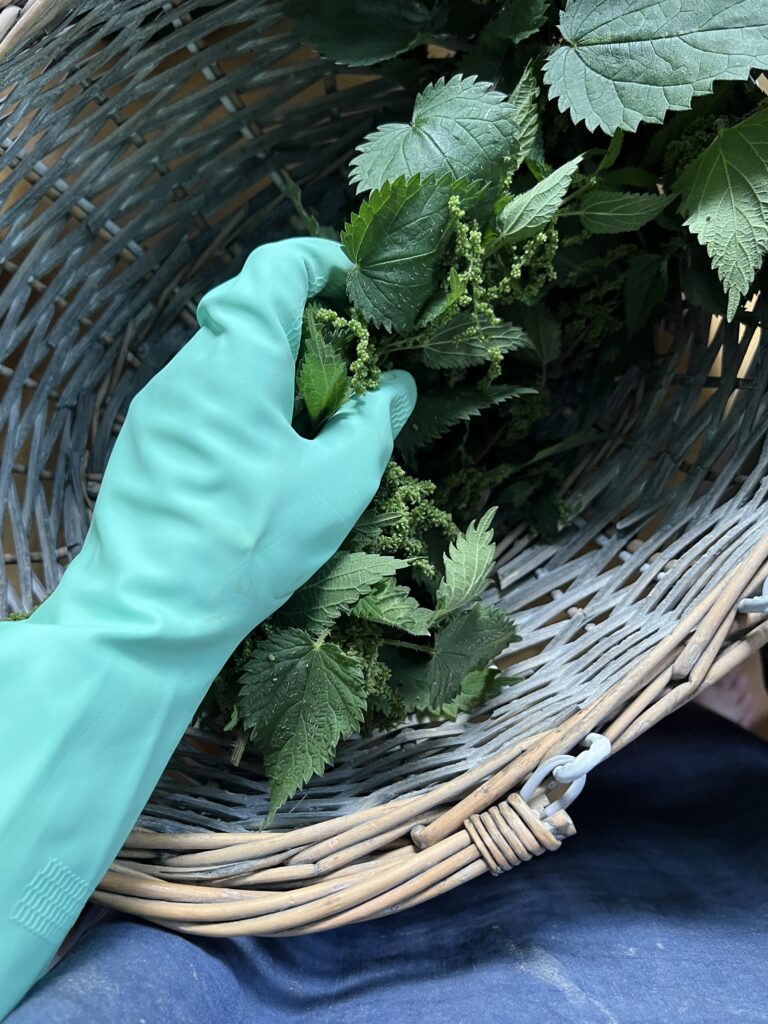
Back home, tie up the nettles in bundles and hang them up somewhere to dry for a week. I hung them on the banister in our stairwell – we have a very understanding neighbour we share our landing with, and as we’re the top floor it doesn’t bother the rest of the stair much.
Once the leaves and seeds have dried, strip them off the stalks into a lay bowl or tray (remember to wear your gloves!) Sift out the leaves by hand, then pass the seeds through a sieve.
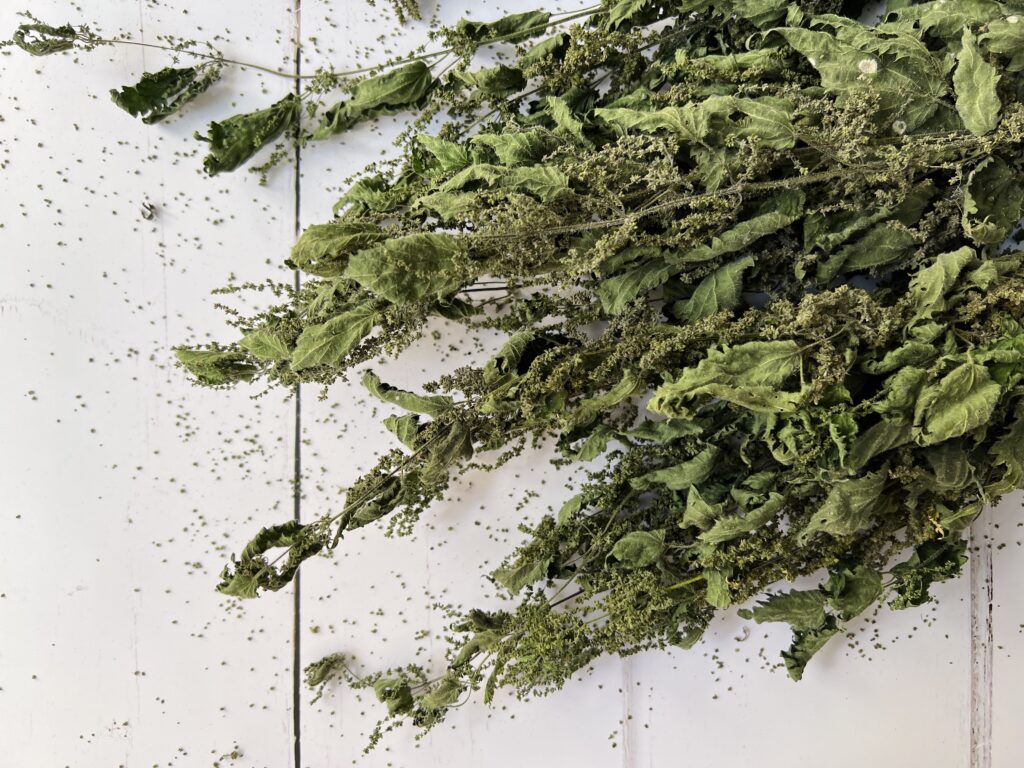
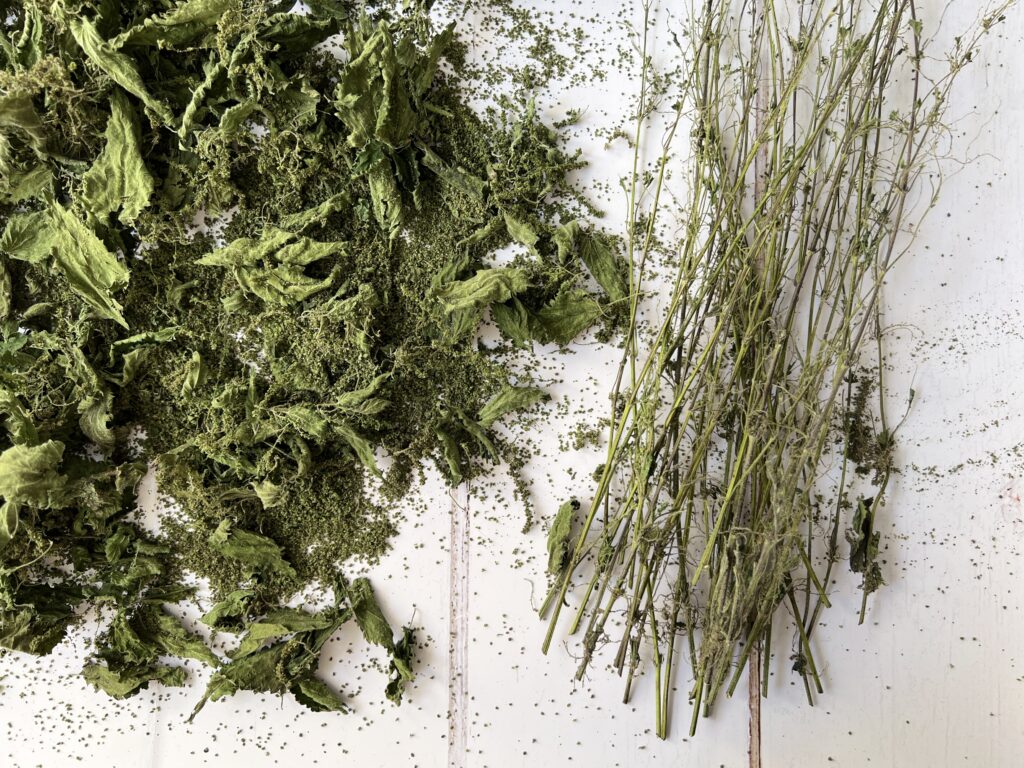
If you rub the clusters lightly against the sieve, the seeds will come off and leave any remaining little bits of stems, stalks or leaves behind. I sieved my seeds twice, gently shaking the second time without rubbing them, to catch any final ‘debris’ that had been pushed through the first time.
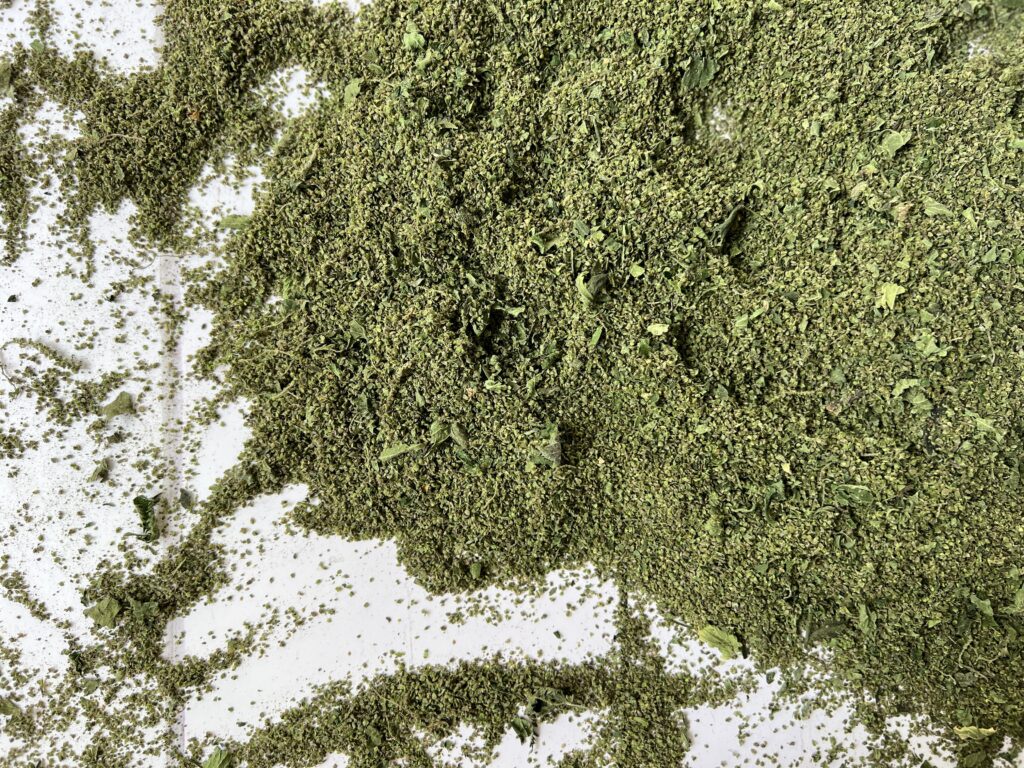
Then all you need to do is store the seeds in a sterile jar. We have two jars in the larder, and keep one jar at the kitchen table with other condiments, to sprinkle nettles seeds liberally on to our food as appropriate. My youngest really loves them. My eldest is still a little sceptical. My husband thinks they taste a bit like Japanese nori seaweed sprinkles.
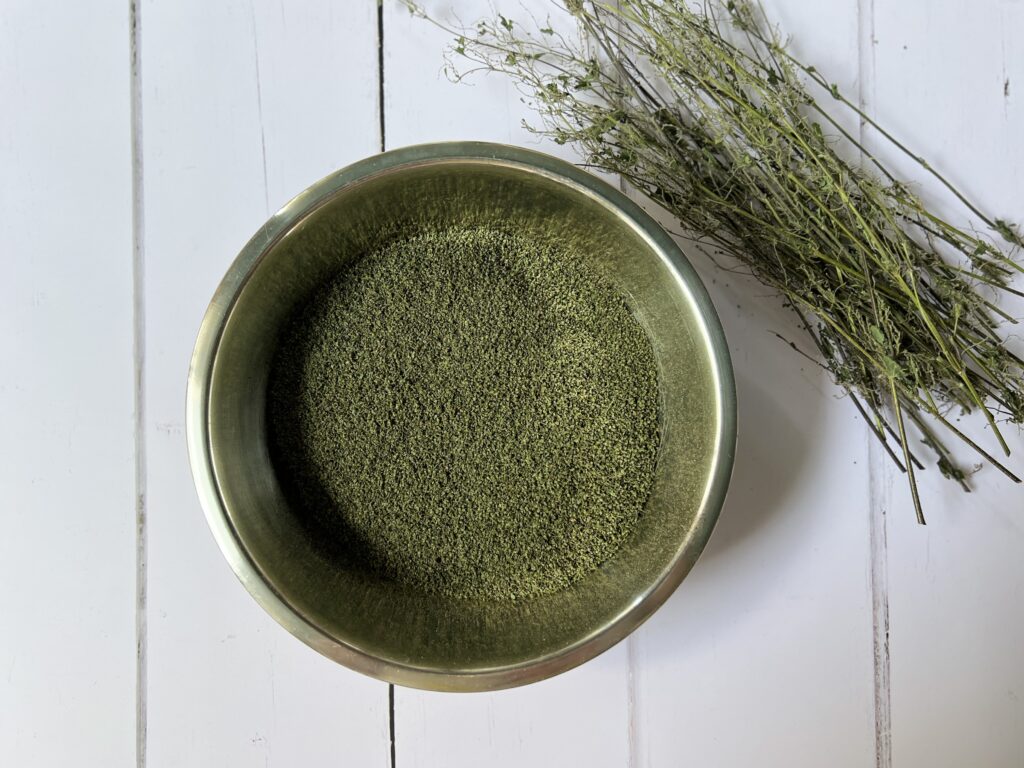
You can add the nettle seeds to smoothies or sprinkle them on salads, pasta dishes, any dish you might sprinkle other kinds of seeds on too. Or you can use them to bake seed crackers, which given that we’ve ended up with three ginormous jars of nettle seeds, may very well be the next thing I will try!
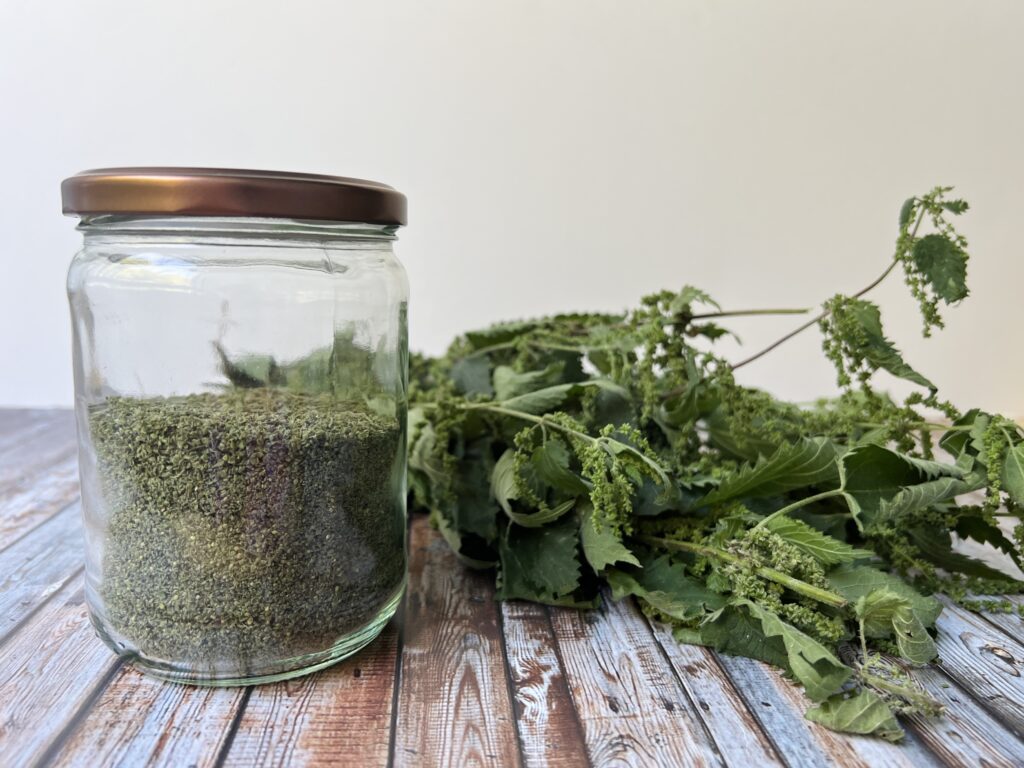
By the way, you can also eat nettle seeds fresh. They still have a little bit of a sting, though not as much as the leaves, but my friend showed me that if you squash them between your fingers first you avoid getting that stinging tingling feeling in your mouth. If you’re unsure, then drying them is the way to go.
Caution: Nettle plants are pretty easy to identify, but remember to only every forage for plants that you are confident you know what they are. If you are in anyway unsure, leave them well alone! And always forage responsibly, never taking too much from the same plant or spot.




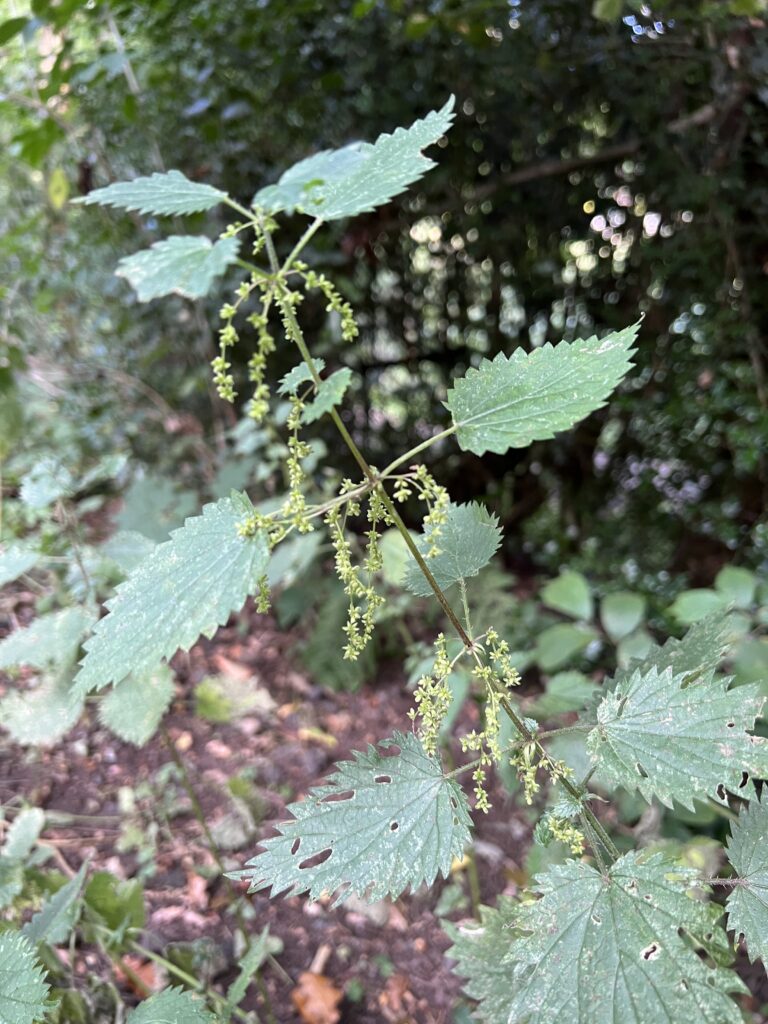
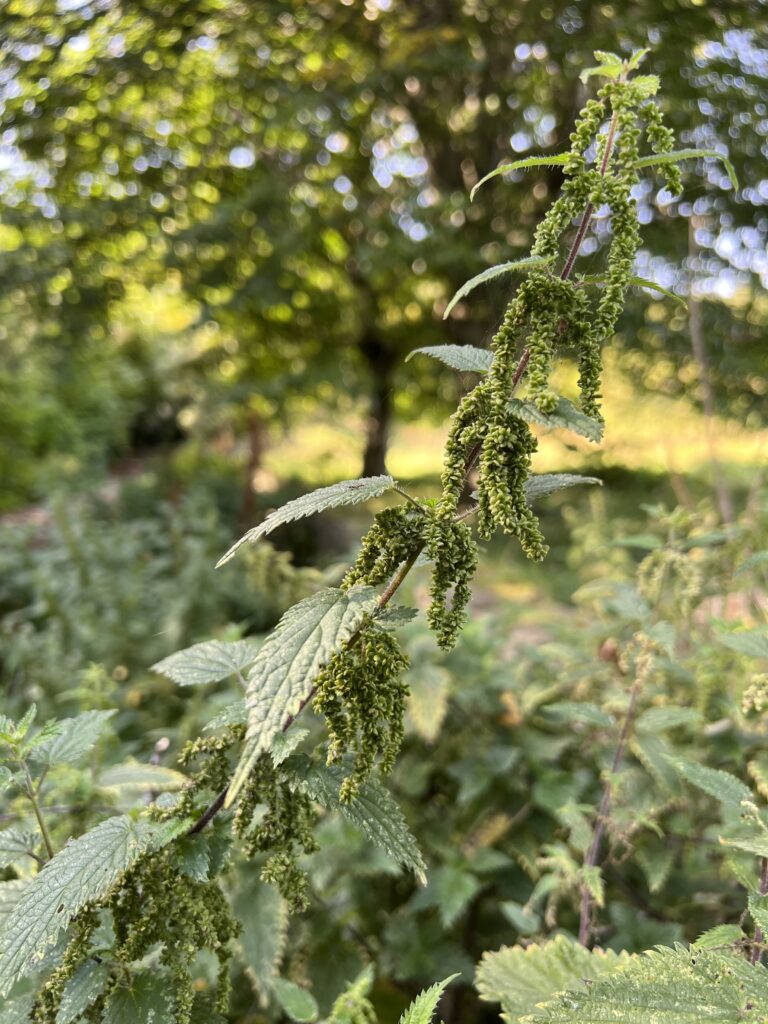
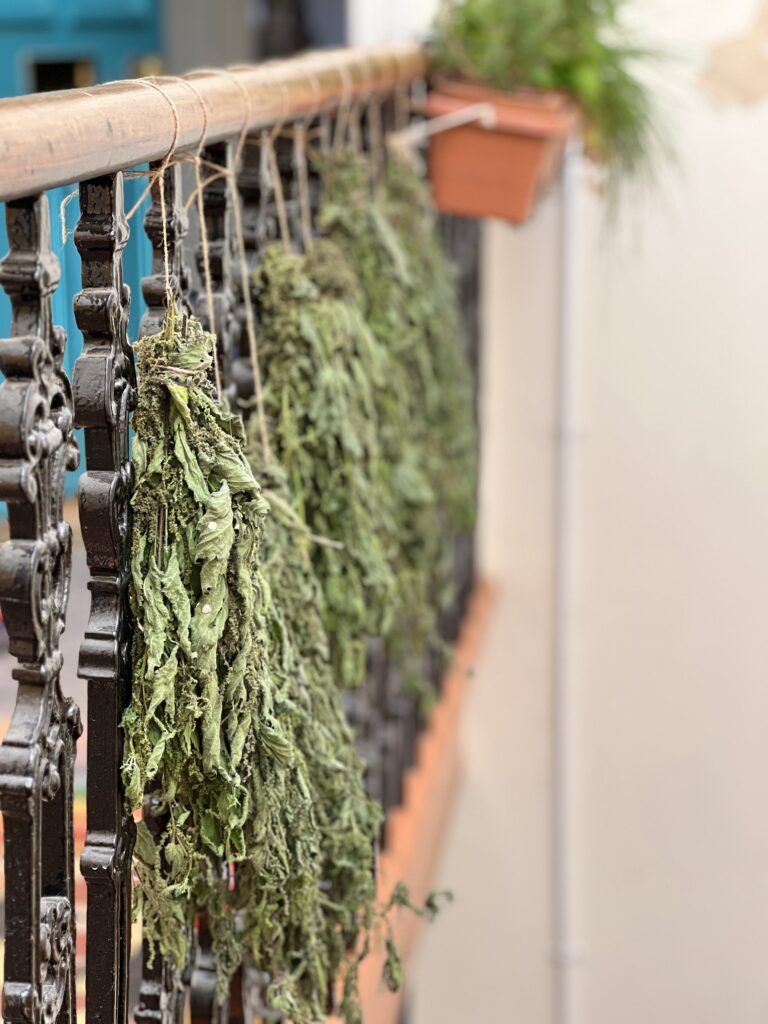
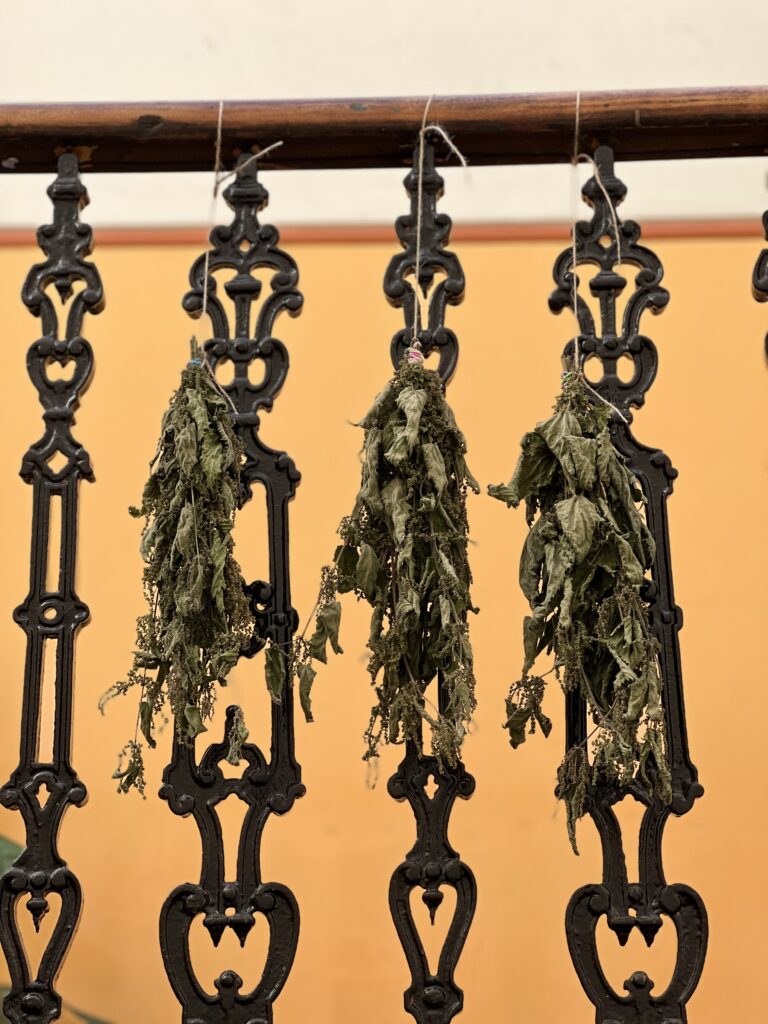
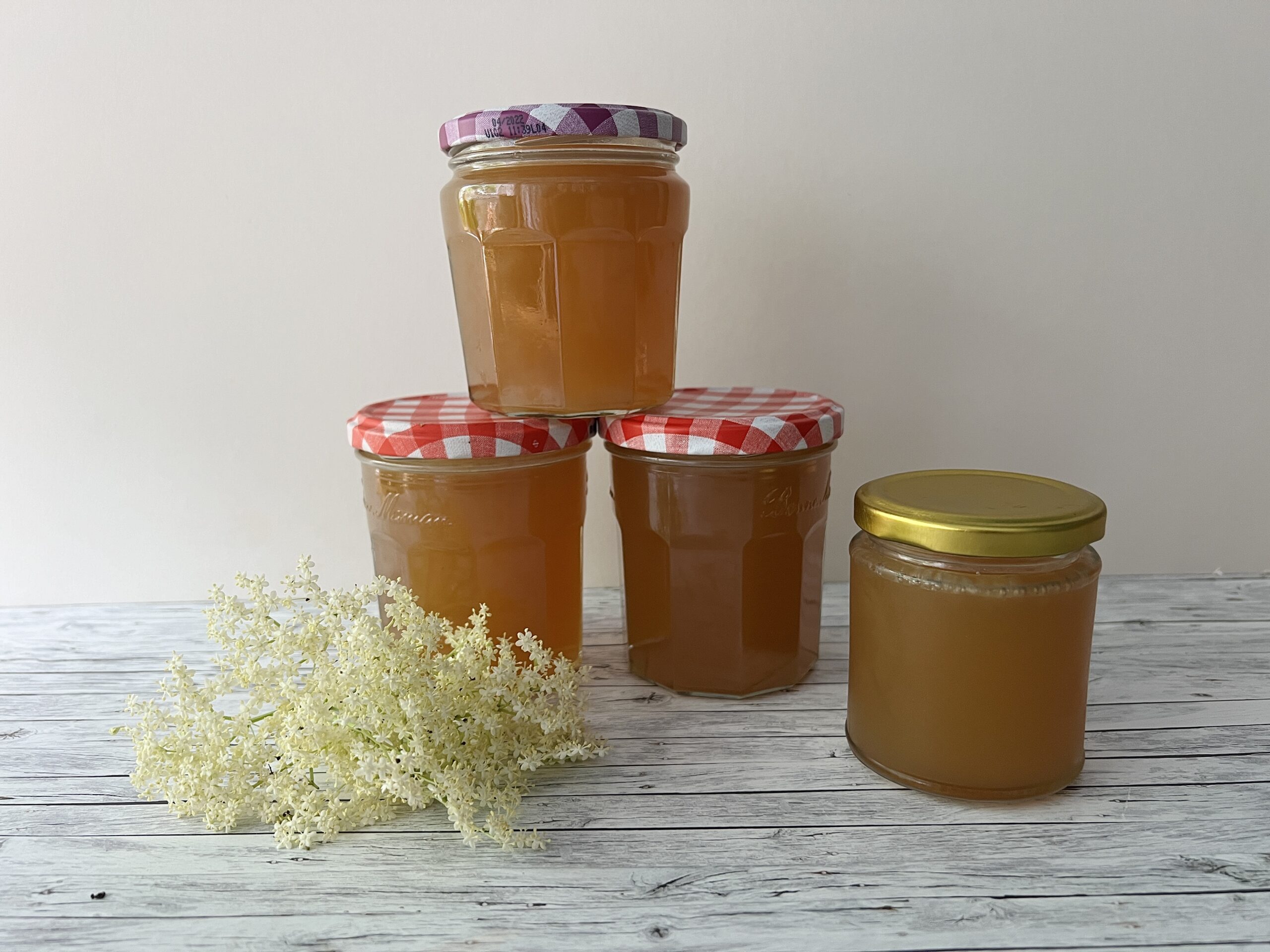
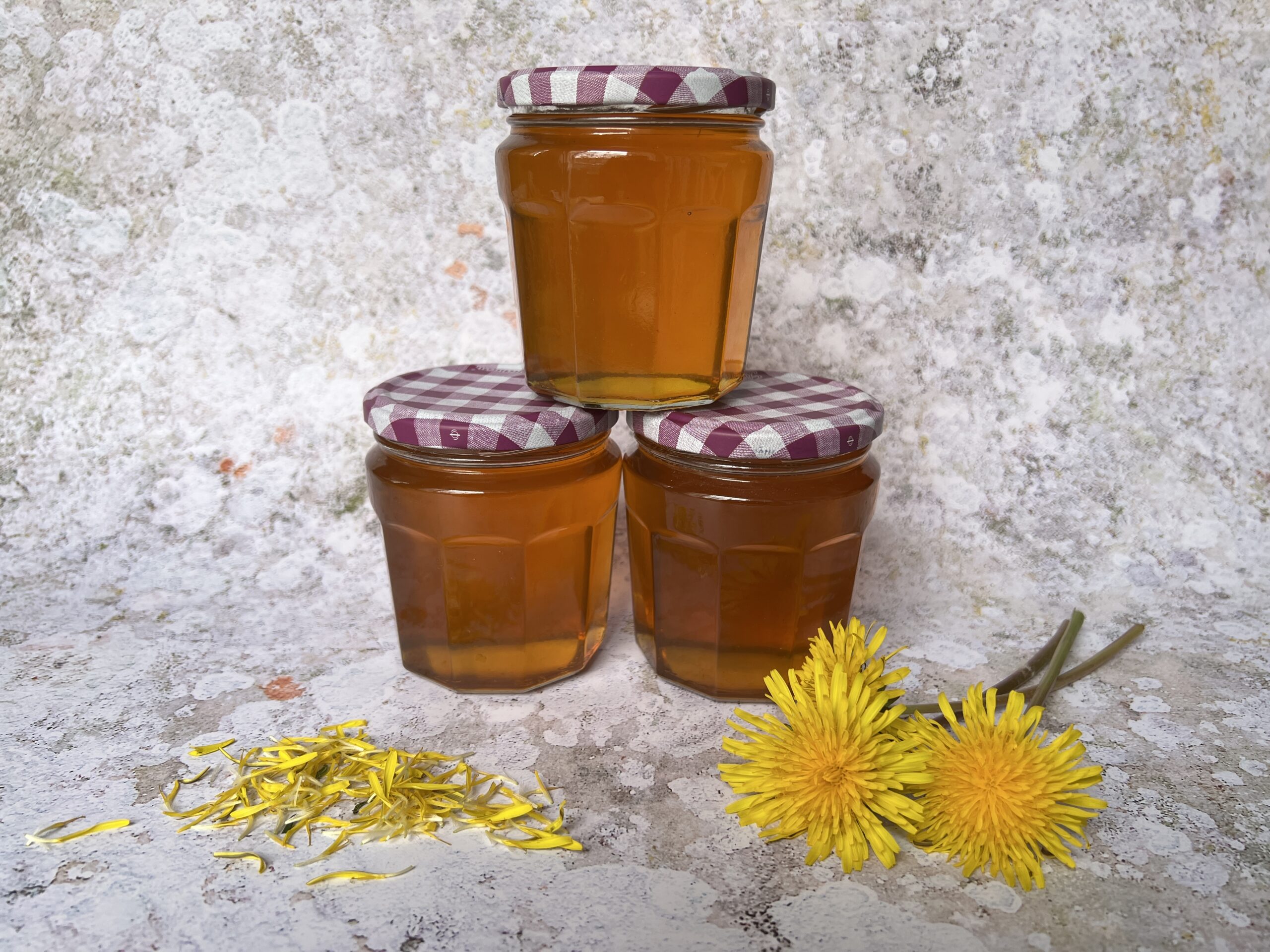
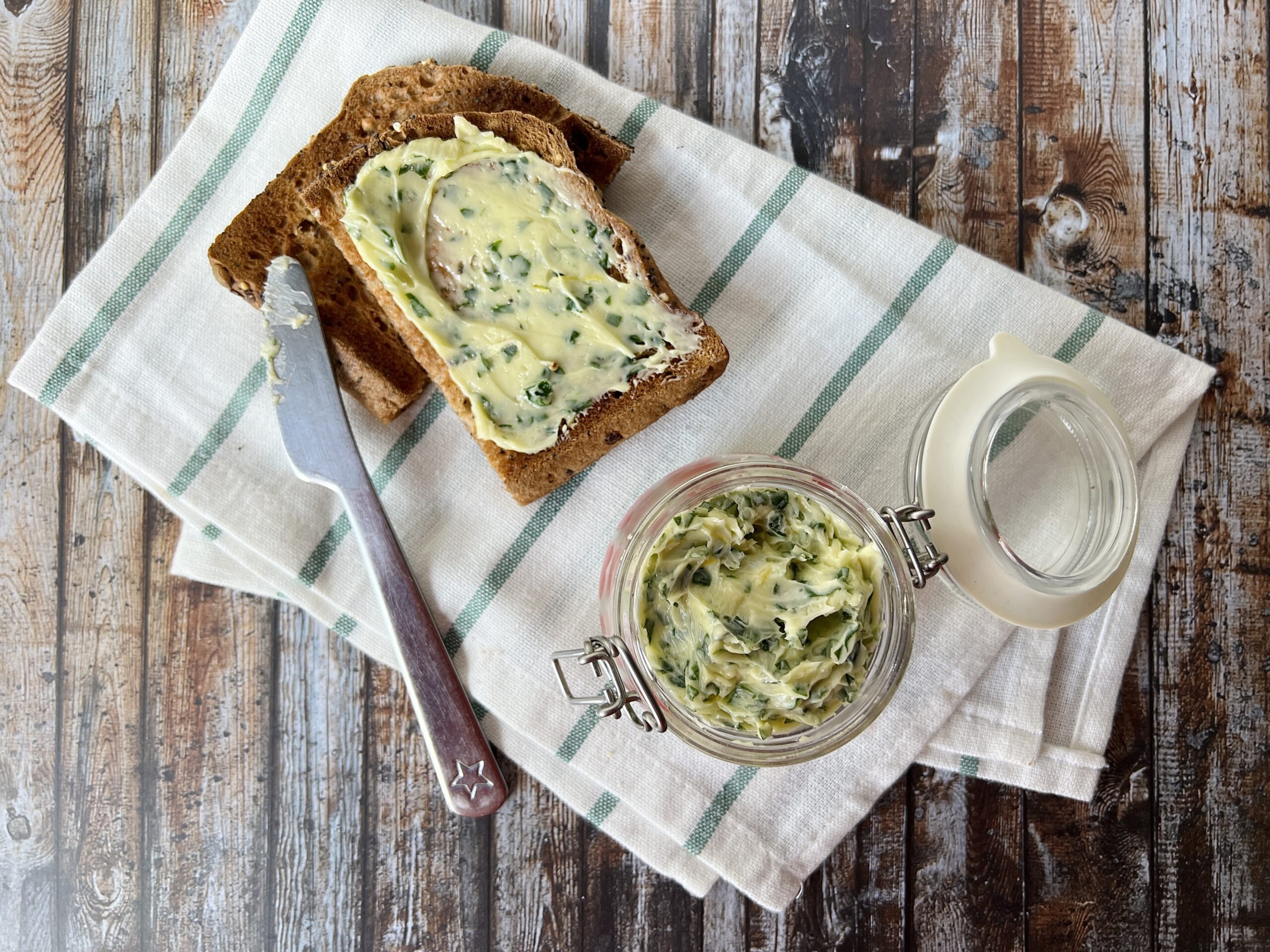
Pingback: Foraged Apple & Rose Hip Jelly – The Bear & The Fox
Simon
Great guide for harvesting and preparing nettle seeds, thank you!
Jenni
Thanks for reading, glad you found it helpful!